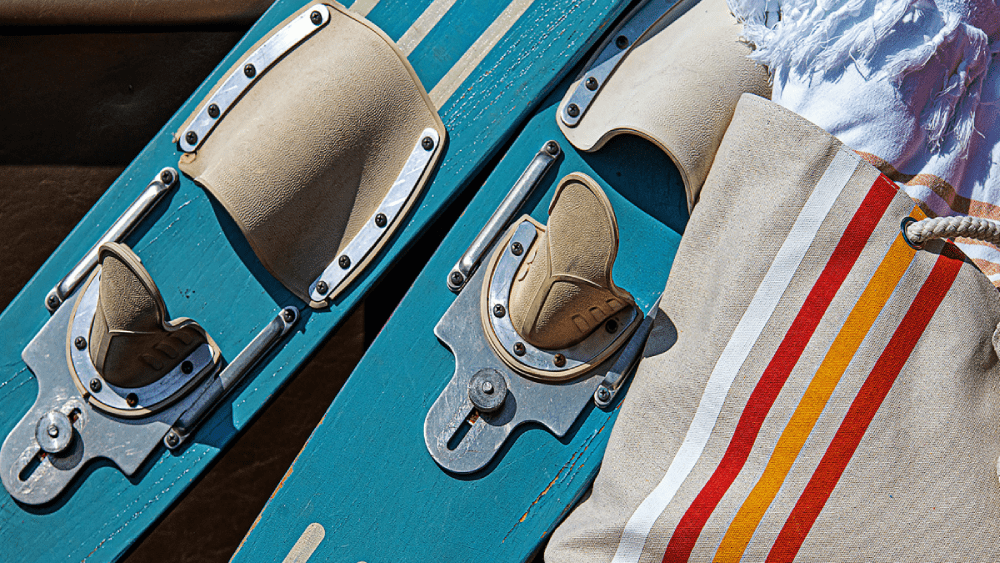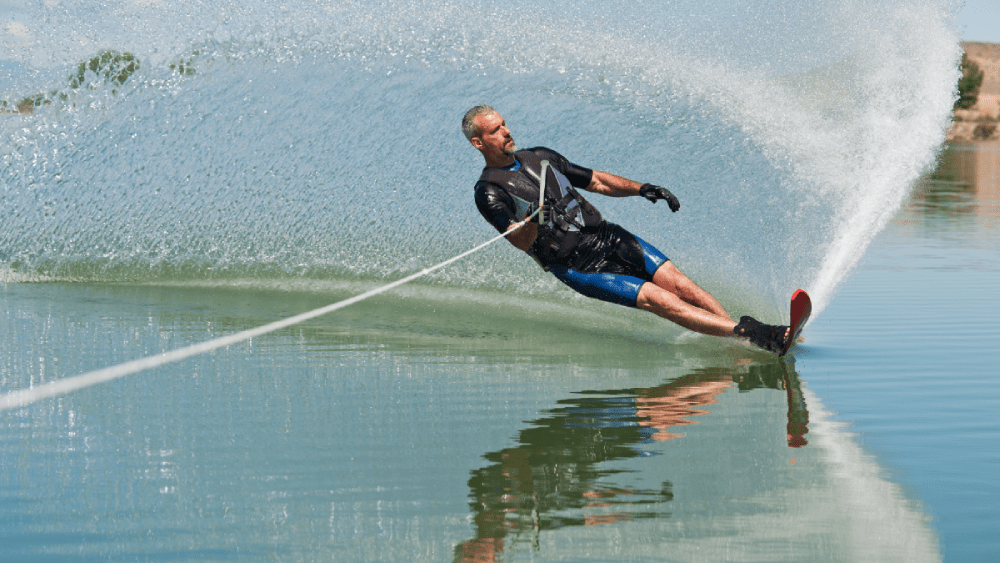How To Water Ski
Wes Severson July 7th, 2023 Posted In: How-To Tags: Wake
How Do You Water Ski?
Water skiing is an exhilarating watersport that includes the thrill of speed with an extreme amount of balance and coordination. Whether you’re a beginner or looking to improve your skills, this guide will provide you with essential information on how to water ski. We’ll cover everything you need to know, including the necessary equipment and mastering the different water skiing techniques.
What we’ll cover in this article:
- Understanding the Equipment
- Choosing the Right Rope Length
- Exploring Single-Ski and Double-Ski Water Skiing
- Mastering the Basics of Water Skiing
- Developing Advanced Techniques
- Safety Tips for Water Skiing
Understanding the Water Ski Equipment
Before teaching you how to water ski, you need to familiarize yourself with the equipment used in the sport. Here are the necessary items you’ll need:
Skis
Water skis come in tons of styles, such as slalom skis for advanced skiers and combo skis for beginners. Combo skis are wider and provide better stability, making them ideal for beginners. Water skis include bindings, usually made of rubber, which secure your feet to the skis. They should be snug but not too tight to allow for easy release in case of a fall.

Life Jacket
Wearing a Coast Guard-approved life jacket is usually always required when water skiing. Your life jacket will keep you afloat if you take a bad crash and become unconscious. Life jackets should fit snugly around your body in order to work properly. There are hundreds of different designs and brands, so make sure to find the one that fits you best.
Rope and Handle
The ski rope is typically made of polypropylene and should have a comfortable handle with good gripping material. There are ropes that are specifically made for water skiers, which often have a V-shape to accommodate different hand positions.
It’s recommended to start with a shorter rope length, for beginners it is usually around 50-60 feet. As you become more confident on a water ski, you can gradually increase the rope length. Intermediate and advanced skiers typically use ropes between 60-75 feet or longer, depending on their skill level and preference.
Gloves & Helmet (Optional)
Water skiing is tough on the hands, especially as the boat pulls you out of the water. It may be best to grab a pair of water-friendly gloves to help improve your gripping strength and prevent blisters. Helmets are also a good idea since water-skiing speeds tend to vary from 15 to 30 miles an hour. At that speed, the water is much less forgiving, and if you hit your head, it could hurt you or knock you out.
Exploring Single-Ski and Double-Ski Water Skiing
Water skiing can be enjoyed using either a single-ski or a double-ski setup and there are several major differences between the two:
Single-Ski Water Skiing
Single skiing, also known as slalom skiing, involves using a single ski that has bindings for both feet. It requires a higher level of skill, balance, control, and strength. Slalom skiing allows experienced skiers to perform more advanced maneuvers, such as cutting through the wakes, making hard-leaning turns, and spraying out large sections of water that are commonly known as ‘rooster tails.’
Double-Ski Water Skiing
Double-ski water skiing is ideal for beginners or weaker individuals who might prefer a more stable and relaxed experience. It involves using two skis, which provide better balance and ease of control. Double-skiing is usually where people start because it is a great way to build confidence and start developing the skills required for slalom skiing.
How To Water Ski – Mastering the Basics
Now that you’re familiar with the equipment and the difference between single-skiing and double-skiing, let’s take a look at the basic techniques of water skiing.
Getting up on double skis
When you first set out to water ski you will be floating in the water with the front half of your skis sticking out of the water. This is known as a ‘Deepwater Start.’ With your skis parallel, hold onto the handle with a slight bend in your arms. As the boat begins to pull, allow your body to be lifted out of the water, gradually straightening your legs while keeping your weight evenly distributed.
The key here is letting the force of the boat do the work to pull you up. It might feel natural to pull against the force of the boat, but that usually ends in an unsuccessful start. It is very common for beginners to take 5 to 15 tries before they successfully stand up.

Getting up on a single ski
Trying to get up on a single ski takes more balance and strength. As you float in the water, be sure that you keep the ski as centered as possible. When the boat starts to take off, you push the ski into the force of the water, while maintaining a tight grip on the rope, that almost feels like you are pulling against it. There is a delicate balance at this point to the amount of force you pull back with and letting the boat pull you up. Once you find this balance, you usually pop right up. Again, if it is your first time trying a single ski setup, it may take you 5 to 15 tries to successfully stand up.
Body Position
Having a correct stance while you’re up on the ski is very important. On both a single and double ski setup, it’s best to maintain a slightly crouched position with your knees bent and arms relaxed, holding the handle somewhere between hip or chest level. Keep your weight centered and balanced between both feet.
Balance and Control
Once you’re out of the water, focus on maintaining your balance by keeping your body centered and your knees slightly flexed. Use your body movements to control your direction and navigate through the wakes.
Advanced Water Skiing Techniques:
Cutting Through Wakes
To cut through the wakes, shift your weight to the back foot while leaning away from the boat. This allows you to slice through the wakes smoothly and maintain your speed.
Jumping the Wake
Once you’ve gained confidence, you can attempt jumping the wakes. Approach the wake with increased speed and shift your weight to your front foot just before hitting the wake. Extend your legs to lift off the water and land softly on the other side.
Water Skiing Safety Tips
Water skiing is exciting, but safety should always be a top priority. Here are some important safety tips to keep in mind:
- Always wear a properly fitted life jacket.
- Maintain a safe distance from other boats, swimmers, and objects in the water.
- Use hand signals or a predetermined communication system to communicate with the boat driver.
- Ski in areas designated for water skiing, away from restricted zones, dangerous areas, marked hazards, and shorelines
- Be mindful of weather conditions and avoid water skiing during storms or strong winds.
How to Water Ski Conclusion
Water skiing is a thrilling experience for all skill levels. By understanding the necessary equipment, choosing the right rope length, and exploring different skiing styles, you can begin your water skiing journey confidently. Remember to start with the basics, gradually progress, and always prioritize safety. With practice and determination, you’ll soon be gliding across the water with grace and skill while creating lasting memories on the water!

